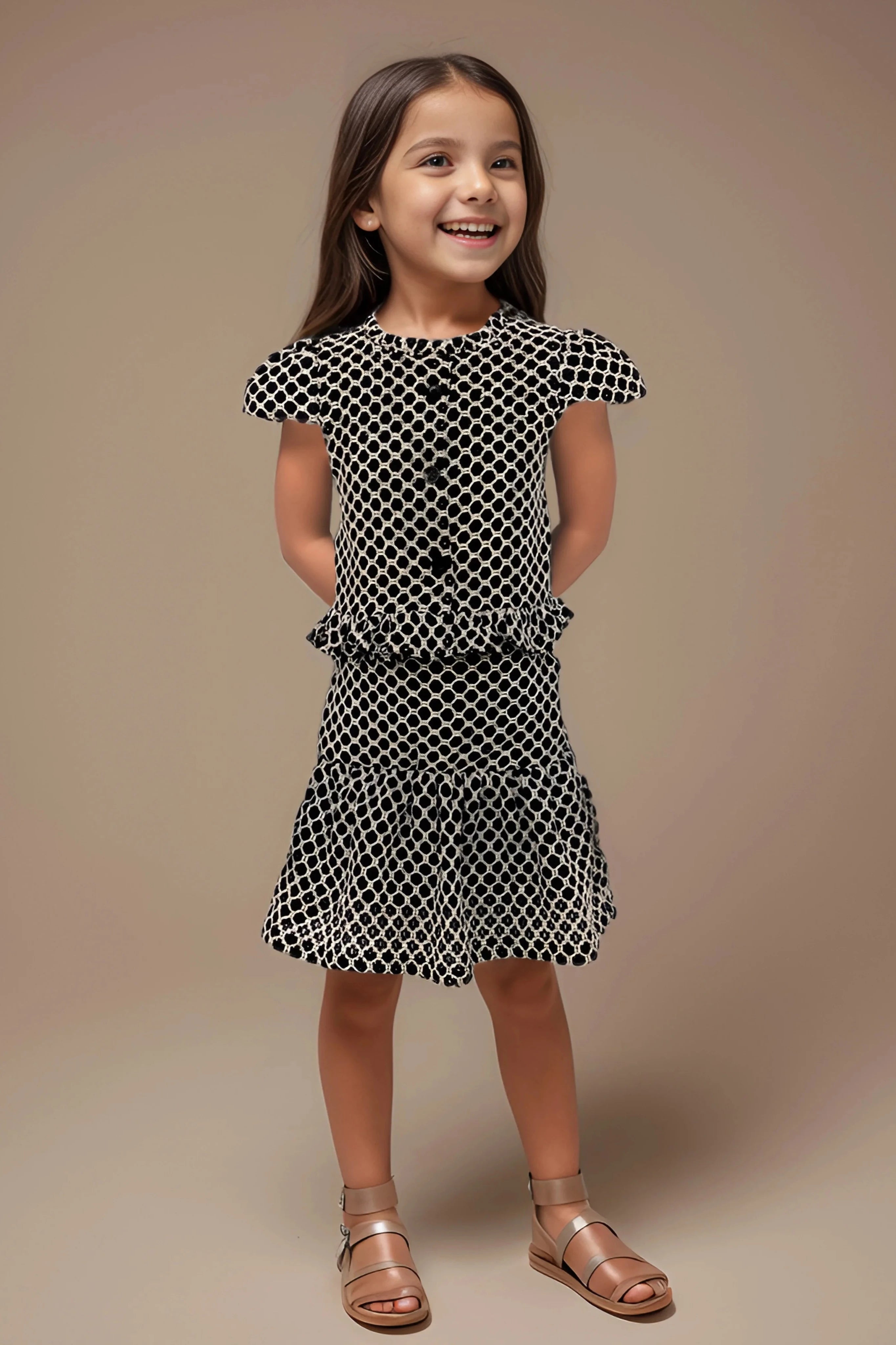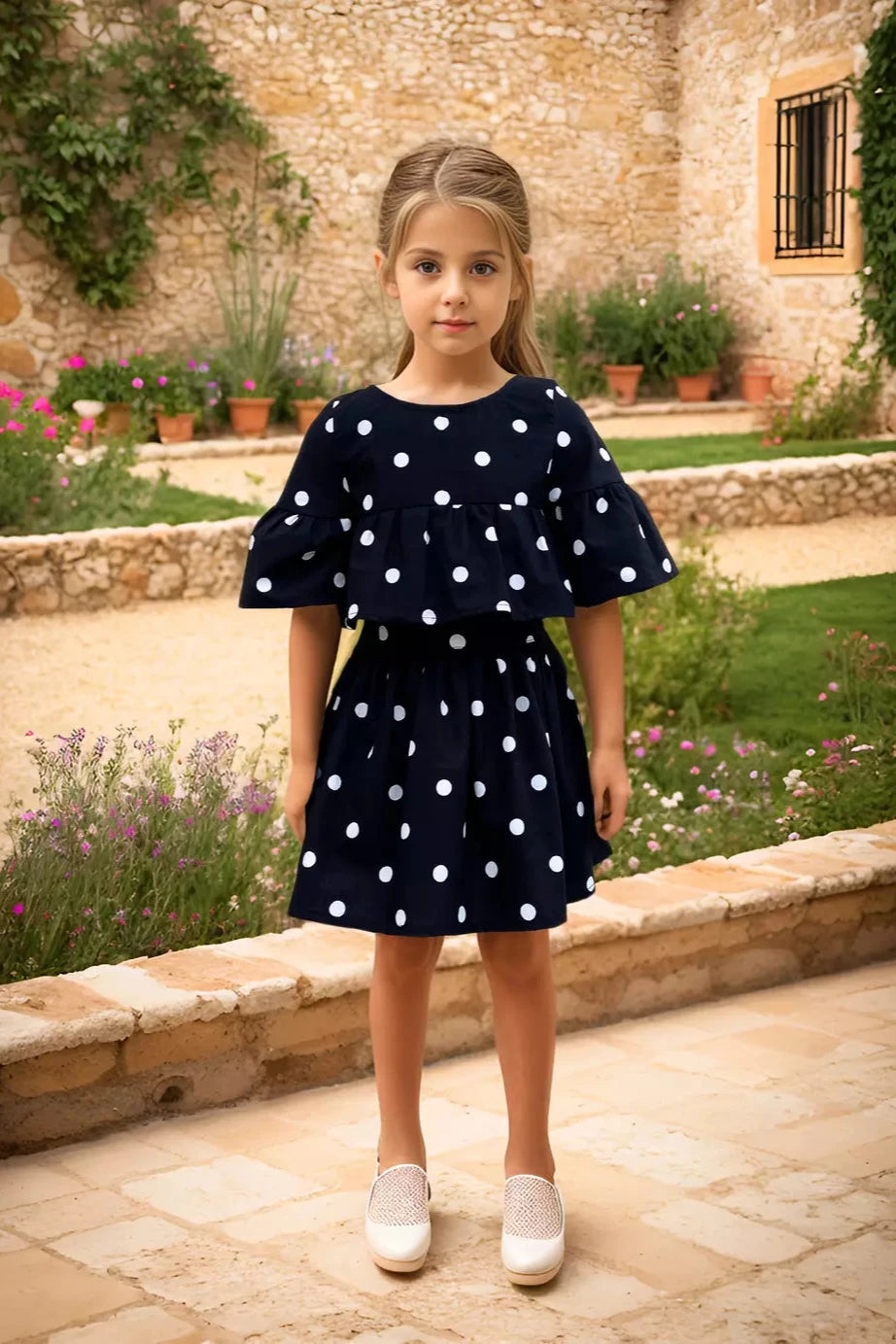2 Letters Words for Kids with Pictures
Teaching a child to read two-letter words is the first step to building strong reading skills. These simple words, like "wh," "sh," and "ph," form the foundation for learning longer words and sentences. Using phonics and sight words, kids can learn to read with confidence. This approach is especially helpful for children with dyslexia, as it supports word recognition and reading fluency. By blending sounds together, they quickly recognize words and improve their reading skills. With fun games, flashcards, and regular practice, learning becomes exciting and enjoyable. Ready to help your child learn to read? Let’s explore how to make reading two-letter words fun and easy!

2- Letter Words for kids
Two-letter words for kids are simple and easy to learn, making them perfect for beginners to decode the sentence. They help build a strong foundation in phonics, sight words, and early reading skills. Examples include:
-
at, in, on, up, it, is, an, ee, be, ll, to, do, so, no, he, hi, ha, ya, ma, pa, ng, oo
These short words and common words are great for practicing sound blending and word recognition, especially for kids learning to read or those with dyslexia. Start with these basics to help your child become a confident reader!
When to Start Teaching Two-Letter Words
-
Around Kindergarten Age : By the time kids are in kindergarten, they start to understand common words. It's good to teach them some easy two-letter words in English. These words are used often and help kids learn to read better.
-
As early as 2-3 years old : Start teaching the alphabet when your child is around 2 or 3 years old. This gives them time to learn the letters before they begin school.
-
After mastering phonics : Once kids learn phonics, help them say the words out loud. It might be a bit hard at first, but they’ll get better at reading two-letter words with practice.
Benefits Of Learning 2 Letter Words In English For Kids
1. Build a strong foundation for reading :
-
Two-letter words are often the first words children learn to read independently.
-
They help kids understand the basics of phonics and blending sounds (e.g., /a/ + /t/ = "at").
-
Mastering these words boosts confidence and encourages kids to tackle longer words.
2. Improves Phonics Skills
-
Two-letter words are perfect for teaching phonics because they consist of simple vowel-consonant (VC) or consonant-vowel (CV) combinations.
-
Kids learn to associate letters with their sounds, which is essential for decoding new words.
3. Enhances Vocabulary
-
Two-letter words like "is," "at," "in," and "on" are commonly used in everyday language.
-
Learning these words helps kids understand and use them in sentences, expanding their vocabulary.
4. Encourages Early Writing Skills
-
Two-letter words are easy for kids to write and spell.
-
Practicing these words helps children develop fine motor skills, phonological awareness and handwriting abilities.
5. Develops Sentence Formation Skills
-
Two-letter words are often used as connectors or prepositions in sentences (e.g., "I am in the car").
-
Learning these words helps kids understand sentence structure and grammar basics.
6. Improves Listening and Speaking Skills
-
Recognizing and using two-letter words helps kids become better listeners and speakers.
-
They learn to identify these words in conversations and use them appropriately.
7. Encourages Independent Learning
-
Two-letter words are simple enough for kids to practice on their own.
-
This fosters a sense of independence, alphabetic awareness and self-directed learning.
Step-by-Step Guide to Teaching Two-Letter Words
1. Introduce Phonics Sounds
-
Teach the sounds of individual letters, especially vowels (a, e, i, o, u) and common consonants (e.g., t, n, s, m).
-
Use fun activities like songs, rhymes, or alphabet games to make learning engaging.
2. Start with Simple Two-Letter Words
-
Begin with common two-letter words that use simple vowel sounds, such as:
-
at, an, am, as
-
it, in, is, if
-
on, of, or
-
up, us
-
we, me, my
-
be, by, go, to, do, so, no
-
Introduce 2–3 words at a time to avoid overwhelming your child.
3. Teach Blending Sounds
-
Show your child how to blend letter sounds to form words (e.g., /a/ + /t/ = "at").
-
Use visual aids like flashcards or letter tiles to make blending interactive.
-
Practice blending with different words until they feel confident.
4. Use Visual Aids and Flashcards
-
Create or buy flashcards with two-letter words and corresponding pictures (e.g., "at" with a picture of a cat).
-
Display the flashcards in a visible area and review them daily.
5. Incorporate Fun Activities
-
Word Matching Games: Match flashcards to objects or pictures.
-
Scavenger Hunts: Ask your child to find objects that match the words (e.g., "Find something that is 'on' the table").
-
Interactive Apps: Use educational apps designed for early reading.
-
Writing Practice: Have your child trace or write the words to reinforce spelling.
6. Practice with Simple Sentences
-
Create short sentences using two-letter words (e.g., "I am in," "It is on").
-
Encourage your child to read and repeat these sentences.
7. Reinforce Learning Through Repetition
-
Review the words regularly to help your child retain them.
-
Use a mix of activities (e.g., flashcards, games, writing) to keep practice sessions fun and varied.
Two letter words in english with meaning
-
at – Indicates a location or time (e.g., "She is at the park.")
-
an – Used before words starting with a vowel sound (e.g., "An apple a day.")
-
am – A form of the verb "to be" (e.g., "I am happy.")
-
as – Indicates similarity or role (e.g., "She works as a teacher.")
-
it – Refers to a thing or object (e.g., "It is raining.")
-
in – Indicates location or inclusion (e.g., "The book is in the bag.")
-
is – A form of the verb "to be" (e.g., "He is tall.")
-
if – Indicates a condition (e.g., "If it rains, we will stay home.")
-
on – Indicates position or contact (e.g., "The book is on the table.")
-
of – Indicates possession or relationship (e.g., "The color of the sky.")
-
or – Indicates a choice (e.g., "Tea or coffee?")
-
up – Indicates direction or movement (e.g., "Look up at the sky.")
-
us – Refers to a group including the speaker (e.g., "She gave us a gift.")
-
we – Refers to a group including the speaker (e.g., "We are going to the park.")
-
me – Refers to the speaker (e.g., "Give it to me.")
-
my – Indicates possession (e.g., "This is my book.")
-
be – A form of the verb "to be" (e.g., "Be kind.")
-
by – Indicates proximity or authorship (e.g., "The book is by the bed.")
-
go – Indicates movement (e.g., "Let’s go to the park.")
-
to – Indicates direction or purpose (e.g., "I went to the store.")
-
do – Indicates action (e.g., "Do your homework.")
-
so – Indicates result or manner (e.g., "It was so fun.")
-
no – Indicates refusal or negation (e.g., "No, thank you.")
-
he – Refers to a male person (e.g., "He is my friend.")
-
she – Refers to a female person (e.g., "She is reading a book.")
-
hi – A greeting (e.g., "Hi, how are you?")
-
ha – An expression of laughter or surprise (e.g., "Ha! That’s funny.")
-
ya – Informal for "you" (e.g., "See ya later.")
-
ma – Informal for "mother" (e.g., "I love you, Ma.")
-
pa – Informal for "father" (e.g., "Pa is coming home.")
25 two letter words
Phonics 2 letter words list
Here's a list of phonics-based two-letter words for kids, useful in building early reading skills:
-
Am
-
An
-
As
-
At
-
Be
-
By
-
Do
-
He
-
Hi
-
If
-
In
-
Is
-
It
-
Me
-
My
-
No
-
Of
-
On
-
Or
-
So
-
To
-
Up
-
Us
-
We
How to teach a child to write words
1. Develop Fine Motor Skills
Before writing words, children need to develop the physical ability to hold a pencil and form letters. Activities to strengthen fine motor skills include:
-
Tracing shapes and lines: Use worksheets or draw dotted lines for them to trace.
-
Playing with playdough: Helps strengthen hand muscles.
-
Using tweezers or tongs: Picking up small objects improves grip and control.
-
Coloring and drawing: Encourages hand-eye coordination.
2. Teach Letter Recognition
Children need to recognize letters before they can write words. Use:
-
Alphabet charts: Point to and name each letter.
-
Letter puzzles or flashcards: Make learning interactive.
-
Sing the alphabet song: Reinforces letter order and names.
3. Introduce Phonics
Help children connect letters to their sounds:
-
Teach letter sounds: Start with simple consonants and short vowels (e.g., /a/, /b/, /c/).
-
Blend sounds: Practice blending sounds to form simple words (e.g., /c/ + /a/ + /t/ = “cat”).
-
Use phonics games: Play games like “I Spy” with letter sounds.
4. Start with Simple Words
Begin with short, phonetic words that are easy to sound out:
-
CVC words: Consonant-Vowel-Consonant words like “cat,” “dog,” “sun.”
-
High-frequency words: Common words like “the,” “and,” “is.”
5. Use Multi-Sensory Techniques
Engage multiple senses to reinforce learning:
-
Write in sand or shaving cream: Let them form letters with their fingers.
-
Use chalk or paint: Make writing fun and creative.
-
Build words with blocks or clay: Combine tactile and visual learning.
6. Be Patient and Positive
-
Celebrate progress: Praise their efforts, even if the words aren’t perfect.
-
Correct gently: Guide them without discouraging them.
-
Make it fun: Use games, stickers, or rewards to keep them motivated.
7. Gradually Increase Difficulty
As they master simple words, introduce:
-
Longer words: Like “apple,” “happy,” or “jump.”
-
Sight words: Words that don’t follow phonics rules (e.g., “the,” “was”).
-
Sentences: Encourage them to write short sentences.
How to teach two letter words in english for kindergarten
-
Start with Phonics: Begin by teaching the sounds of individual letters. This helps kids understand how letters come together to form words.
-
Use Flashcards: Show two-letter words like “at,” “it,” “is,” “on,” and “up” with pictures to make learning fun and visual.
-
Practice with Repetition: Repeat the words aloud and encourage kids to say them back. This builds recognition and confidence.
-
Engaging Games: Use games like word matching or memory games to make learning interactive and enjoyable.
-
Simple Sentences: Introduce these words in simple sentences like “It is a cat” to help children understand context.
101 two letter words
| at | am | as | as | it |
| is | in | of | on | if |
| up | us | we | me | he |
| she | be | by | my | go |
| no | so | to | do | or |
| for | are | lo | hi | oh |
| ah | ha | ya | yo | ma |
| pa | ta | da | la | na |
| fa | ba | ka | za | qi |
| xi | xu | ox | ow | jo |
| ex | ax | ay | by | cy |
| dy | ey | fy | gy | hy |
| ky | ly | my | ny | oy |
| py | qy | ry | sy | ty |
| uy | vy | wy | xy | yy |
| zy | ab | ad | ag | ae |
| ai | al | aw | ar | ay |
| bi | bo | de | ed | ef |
| eh | el | em | en | er |
| es | et | fi | gi | fe |
| id | ko | li | mi | mo |
| mu | ne | nu | od | oe |
| om | op | os | ow | pe |
| re | sh | si | ti | ut |
| ye | za | zo |
Two letter sight words
Two letter word sentence
-
I am six.
-
We go up.
-
It is on.
-
He is my dad.
-
Do it now.
-
Be my pal.
-
We go in.
-
It is so hot.
-
My cat is up.
-
If I go, we win.
Two letters words in tamil language
-
am - ஆவது (Aavathu)
-
an - ஒரு (Oru)
-
as - போல (Pola)
-
at - இடத்தில் (Idathil)
-
be - இரு (Iru)
-
do - செய் (Sei)
-
go - போ (Pō)
-
he - அவன் (Avan)
-
if - எல் (El)
-
in - உள்ளே (Ullae)
Fun Activities to Teach Two-Letter Words
1. Word Hunt
-
Activity: Hide flashcards with two-letter words around the room or outdoors.
-
How to Play: Children search for the words and read them aloud when they find them.
-
Extension: Have them write down the words they find.
2. Word Puzzles
-
Activity: Create simple puzzles by writing two-letter words on pieces of paper and cutting them in half.
-
How to Play: Children match the halves to form the correct words.
-
Extension: Add pictures to the puzzle pieces for extra context.
3. Word Building with Blocks
-
Activity: Use alphabet blocks or magnetic letters.
-
How to Play: Children build two-letter words by selecting the correct letters.
-
Extension: Time them to see how many words they can build in a minute.
4. Word Hopscotch
-
Activity: Write two-letter words in each square of a hopscotch grid.
-
How to Play: Children hop on the squares and read the words as they land on them.
-
Extension: Ask them to spell the word aloud.
5. Word Bingo
-
Activity: Create bingo cards with two-letter words.
-
How to Play: Call out words, and children mark them on their cards.
-
Extension: Use the words in sentences for added comprehension.
6. Word Art
-
Activity: Write two-letter words on large paper or a whiteboard.
-
How to Play: Children decorate the words with colors, stickers, or drawings.
-
Extension: Create a "word wall" with their decorated words.
7. Word Songs and Rhymes
-
Activity: Create simple songs or rhymes using two-letter words.
-
How to Play: Sing or chant the words together (e.g., "At, am, an, let’s read them again!").
-
Extension: Add actions or clapping to make it more interactive.
8. Word Scavenger Hunt
-
Activity: Write two-letter words on sticky notes and hide them around the house or classroom.
-
How to Play: Children search for the words and read them aloud when found.
-
Extension: Have them write down the words they find.
Helpful Tools for Learning and Improving Two Words
1. Two words like book
If you're looking to teach two-letter sounds effectively, I highly recommend the Jolly Phonics Two Letter Sounds Book. It's a great resource for helping kids learn phonics in a fun and interactive way!

2. YouTube Video
For fun and effective learning, check out The Learning Hub - Pampa Majumdar on YouTube. It's a great resource for teaching phonics and two-letter words to kids!

Two letters words worksheets
Safehugs provides helpful parenting blogs with tips on homeschooling, child development, and positive behaviour, offering practical advice for raising confident and well-rounded children in a nurturing environment.
Related :
- Also Read: "Th Words for Kids" It offers engaging activities, games, and worksheets to help children master voiced and voiceless "Th" sounds.
- Explore our "Sh Words for Kids" blog for fun activities, games, and worksheets to help children master 'Ch' sounds .
- Explore the "Wh Words for Kids " blog for engaging resources that make learning question words fun and easy.
- Explore the "Ph Words for Kids "blog for engaging resources that make learning question words fun and easy.
- Explore the "oo Words for Kids" blog for engaging resources that make learning question words fun and easy.
- Check out the "ee words for kids" blog for fun and educational activities to help children learn and practice ee sound words!
- Explore the "ng Words for Kids" blog for engaging resources that make learning question words fun and easy.
- Explore the "ll Words for Kids" blog for engaging resources that make learning question words fun and easy.
FAQ'S
1. How do you teach double letter words?
To teach double letter words, start with simple words like “ball” and “call,” emphasizing the repeated letter sound. Use flashcards, phonics games, and reading practice to help kids recognize and read these words confidently.
2. What is the fastest way to teach a child to read?
The fastest way to teach a child to read is by using phonics and sight words together. Make learning fun with interactive games, flashcards, and daily reading practice to build confidence and fluency.
3. At what age should a child read letters?
Children typically start recognizing letters around ages 2 to 3. By age 4 to 5, they begin connecting letters with sounds, preparing them for early reading.
4. What is the phonics of two letters?
Phonics of two letters involves blending two sounds to form a word, like "at" or "in." It helps children learn to read by connecting letter sounds with words.
5. What are 10 examples of two letter words?
Ten examples of two-letter words are: am, an, as, at, be, do, go, he, if, and in. These simple words help kids learn to read and build vocabulary.

































